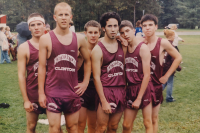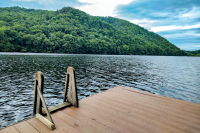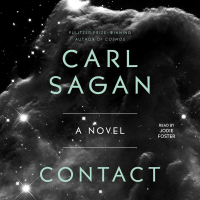Creating health for the earth and humanity

Recently, I was told about a book titled “The Design Pathway For Regenerating Earth” (Earth Regenerators Press, Barachara, Columbia, 2021, 219 pages) by author Joe Brewer.
Brewer is a transdisciplinary scholar weaving insights from scientific study and earth system science. He is affiliated with the Center for Complex Systems Research at the University of Illinois, the Cultural Evolution Society and the Evolution Institute. Or, as he himself states: “My mission is to secure the existence of a complex thriving global civilization in 100 years. The task I now undertake is to launch a global research center on culture design by sharing best practices, building a global network of collaborators, and securing financing for the next generation of cultural research and design.”
So, what we have with this book is a personalized text for the future of both the planet and humanity. Or, in more dramatic terms, “This is a book about what will need to happen if humanity is to intentionally avoid extinction. It is a disturbing truth that our current trajectory includes the real possibility that we could fail to meet this objective — and as a result, bring about our own demise.”
While this book isn’t an all-positive scenario for the future and not without scientific evidence to the contrary, it is, however, something of a playbook for where and how we humans have to go no matter how the future plays out related to the effect of climate change and what is seen by big business as economic and technological “progress.” In his book, Brewer focuses on many of the issues that will have to be addressed, such as creating regenerative Bioregions (organized by communities and constructed ecosystems); education (taught from a biological world perspective); community economics (for the benefit of all members of the community, working together); inclusiveness and respect of Indigenous nations; pro-social behavior, raised consciousness and active ethics; holistic landscape management (interconnected networks of eco-systems) and other essential ingredients and work that Brewer cites and that needs to be done.
In “The Design Pathway For Regenerating Earth,” Brewer has created a defined outline for each and all of us to participate in in order to restore a viable and sustainable life for all life on the planet. “Live simply, so that others may simply live,” he writes. And goes on to say: “All sustainable human cultures in the past were organized as bioregions. A Great Remembering is called for to embed us in the continuity of indigenous worlds — of which there are many.” In a time when things are going wrong, we look for leaders. Those in the know and with experience to guide us out of crisis and to a more hopeful and sustainable future. During this period of climate and social crisis, Brewer has emerged and become visible and vocal regarding the climate crisis and the hope for human survival and sustainability.
On a more personal level and in regard to the kind of trauma that many people may be experiencing these days, Brewer emphasizes the idea that “the best medicine for grief or trauma is to practice the healing arts for something that you love.” And that the most essential regenerative work we do may well be inside of ourselves. “Learning to adapt and manage when things are beyond our control is just as crucial to the cultivation of trust, generosity, cooperation and goodwill toward others as restoring landscapes together is,” he writes. In this sense, Brewer’s perspective reminds me of the Earth First organization and movement during the 1960s and 1970s, which was an important movement for my generation and all about building consciousness and community with regard to and respect for the natural world. In this respect, he says “Humans have the ability to feel pain on behalf of the Earth.” This goes hand in hand with the idea that everything in the natural world and, in fact, the universe, is connected.
While each of the 26 short chapters in this book are full of first-hand experiential information related to the topics I’ve mentioned above, the most useful section of each chapter may be what comes at the end of each chapter in the form of a Q&A in which Brewer asks the questions and supplies the proper and useful responses. This is more conversational reading and can almost be seen as a kind of interior book in itself — in case, for the average reader, the tech-speak writing in the earlier part of the chapter becomes too much detail to easily retain.
For example: “Discussion Question #1 — What are the key functions and roles of bioregional learning centers?
A: It is quite likely that there are already things, like gardening clubs, retreat centers that host workshops and events, and small pockets of people who have built up their own regenerative projects. Hold these things in your mind as though they were a bioregional learning center, and you’ll see that a lot of groundwork has already been done.”
Brewer’s dialogue with himself continues until we, the reader, are engaged and seeing where we live as a bioregion (in this region of the Southern Appalachians there has already been a bioregion created by some of us in the 1980s and 1990s called the Katuah Bioregion that has been documented in a bioregional journal called “Katuah Journal:A Bioregional Journal of the Southern Appalachians” which is archived at Appalachian State University in Boone in their Special Collections Library at (omeka.library.appstate.edu/collections/show/79).
So, I think the best way to end this review is to leave you with a short meditation practice which appears at the very end of Brewer’s book:
I call into awareness the Earth that anchors my body to this place where I now sit.
A breath inward of nourishment. A breath outward of gratitude.
I call into awareness the Sky that elevates my being to flow with all that is alive.
A breath inward for strength. A breath outward for service.
Thank you Gaia. You are me. I am you. Together we are We.
(Thomas Crowe is a regular contributor to The Smoky Mountain News and author of the multi-award-winning non-fiction nature memoir “Zoro’s Field: My Life in the Appalachian Woods.” This email address is being protected from spambots. You need JavaScript enabled to view it..)













